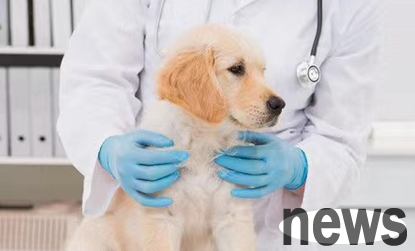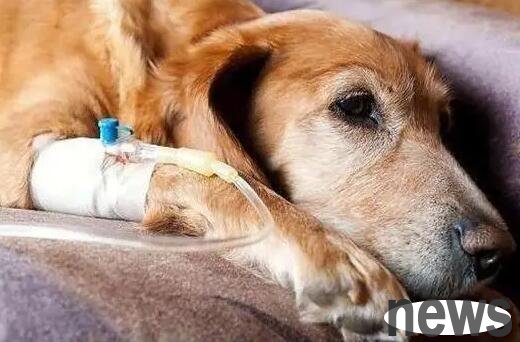The causes of pneumonia in dogs are divided into inhalation, bacterial, esophageal rupture, moldy and lung infection. Dogs with pneumonia are prone to hypoxia. If the condition is not well controlled, it will often cause irreparable damage.

1. What is pneumonia in dogs. Pneumonia is the abbreviation of inflammation in dogs' lungs. The lungs are organs that provide oxygen in the body. They are mainly composed of trachea, bronchial, alveoli and blood vessels, and perform gas exchange. In order to obtain good gas exchange function, the alveoli and blood vessels almost overlap each other in order to perform gas exchange, discharge carbon dioxide in the body, and transport the oxygen in the air to various parts of the body. If the tissues between the trachea, bronchial, alveoli and alveoli are infected due to various factors, the most direct impact is that the gas exchange function is reduced, and dogs are prone to hypoxia. If the condition is not well controlled, it can often cause irreparable damage.
2. Causes of lung disease. The causes of pneumonia can be divided into inhalation, bacterial, immune, moldy and lung infection.
1. Inhalation: Foreign objects enter the respiratory system and cause infection, including vomit and food. This phenomenon often occurs in dogs with abnormal upper gastrointestinal system (such as throat paralysis and esophageal structure abnormalities). In addition, improper anesthesia treatment and improper force-feeding are also easily caused.
2. Bacteriality: Bacteria enter the lungs through the mouth or nasal cavity, further causing infections in the trachea, bronchial and alveoli. The incidence of working dogs weighing more than 12 kg, hunting dogs and dogs with high exercise is relatively high. Every age group can cause illness, but it is usually under 1 year old, and the incidence rate of male dogs is relatively high.
3. Immunity: It mainly occurs in Siberian husky dogs, because congenital immune deficiency causes lung infection. In addition, heartworm infection is also the main cause.
4. Fungal properties: Mold or yeast from other organs in the environment or in the body enters the lungs and causes infection. Common sources of infection are such as M. Berry, Syrmosaccharide, Coccidioidae and Cryptosaccharide. It usually occurs in large dogs, but some molds are prone to occur in dog breeds such as coca and German wolfhound. The onset age is mostly under 4 years old, and the incidence rate of male dogs is 2 to 4 times that of female dogs.
5. Damage to the lungs themselves: The main reason is damage to the tissue between the alveoli, which is the most common problem that occurs during canine distemper infection.

3. Diagnosis methods of canine pneumonia
Generally, the clinical symptoms vary depending on the cause of infection, but usually there are cough, fever, difficulty breathing, decreased mobility, loss of appetite, weight loss and yellow secretions in the nasal cavity.
1. Blood test: The main purpose is to understand blood changes and understand the degree of infection.
2. Chest X-ray test: The shooting process of chest X-ray test should be taken when the dog inhales, because this is the best diagnosis effect. This test can be used to understand the basic infected lobe B position (two lobes on the left and three lobes on the right). And first determine the cause (such as whether it is inhaled pneumonia).
3. Sampling and culture: It can be done through tracheal flushing (sinking saline into the trachea and then extracting it) or bronchoscope (endoscopy), bone marrow sampling, cerebrospinal fluid sampling and lymph node sampling, etc. The main purpose is to collect the source of infection in the lungs to conduct laboratory culture pathogens and drug resistance tests to select the most effective drugs.
4. Treatment methods for canine pneumonia 1. In fact, the most effective treatment method is to find out the source of infection first, and then give effective drug treatment based on the source of infection. Therefore, x-ray diagnosis is only to determine the degree of infection of pneumonia in dogs, and it also needs to be accompanied by sampling examinations to further select drugs. 2. In addition, it is very important to supplement sufficient water, because when you are infected with pneumonia, the lungs need to excrete these sources of infection out of the body through coughing. If the dog's body is insufficient, the sputum in the lungs will be too viscous and lead to difficulty in excretion. 3. Another treatment method is aerosol treatment. It can be used to assist in sputum relief and provide medication. In terms of diet, it is recommended to give dogs foods that are easy to digest and high in protein. If the dog's physiological condition is not good, intravenous nutrition injections or gastric tubes can be given if necessary.
5. The condition after treatment has different therapeutic effects depending on the source of infection. For example, young puppies are infected with bacterial pneumonia and are prone to chronic bronchitis after recovery. Therefore, prevention should be paid attention to. For example, anesthesia often leads to vomiting and inhalation pneumonia. Therefore, if the dog needs to undergo anesthesia or maintain foot conditioning, it should first fast for 6-12 hours. In addition, regular preventive injections and heartworm prevention medications can reduce the chance of infection.